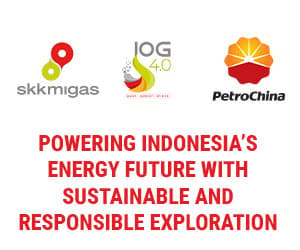By Ginandjar
The government needs to provide much more attractive incentives to attract and encourage investment in the geothermal energy development sector. Without such incentives, it is difficult to expect geothermal energy to develop optimally in Indonesia, given the high risks involved in the sector.
"The potential for geothermal energy in Indonesia is quite significant, accounting for about 40% of the world’s geothermal potential. Therefore, it is unfortunate that this vast potential has not been matched with sufficient incentives, similar to the incentives given to the oil and gas industry," said Supramu Santosa, Founder & Chairman of PT Supreme Energy, in an interview with Petromindo.com in Jakarta last week.
According to Supramu, the electricity potential from geothermal energy in Indonesia could exceed 21 GW (gigawatts). However, only about 10% has been developed into electricity so far, including the power produced by the Geothermal Power Plants (PLTP) developed by PT Supreme Energy.
"Compared to other countries with significant geothermal potential, Indonesia is one of the top players in terms of utilization, ranking second after the United States. However, with a potential that accounts for 40% of the world’s total, Indonesia should be able to develop much more. This is where incentives are needed to attract both domestic and foreign investors," explained Supramu, who is recognized as the "Geothermal Leader of Indonesia" due to his consistent efforts in the geothermal sector.
During the interview, Supramu was accompanied by Nisriyanto, President Director of PT Supreme Energy, and Prijandaru Effendi, Executive Vice President of Relations and Support Services.
Read also : Geothermal drives Indonesia’s renewable energy growth
Nisriyanto added that one of the necessary incentives for the geothermal industry is the exemption from property tax (PBB). According to Nisri, this tax is considered quite significant in the financing of the industry. "In the oil and gas industry, this property tax can be waived. We hope the government will consider providing similar policies for geothermal development," Nisri said.
In addition, he mentioned there are other incentives the government could provide to make geothermal energy more attractive to both domestic and foreign investors.
"Another example is low-interest loans, like those given to state-owned enterprises (SOEs). The government should help facilitate this, as we currently receive commercial interest rates that are much higher than the low rates provided to SOEs. Also, there are various taxes that we consider to be double-taxed. These are just suggestions to make the geothermal industry more appealing to investors," he explained.
According to Petromindo’s records, the geothermal power plants (PLTP) developed in Indonesia are located across various regions, including Java, Sumatra, Nusa Tenggara & Bali, and Sulawesi. So far, the largest geothermal plant is PLTP Sarulla in North Sumatra, with a total capacity of 330 MW (megawatts). This plant is considered "special" because it is the largest single power purchase agreement (PPA) geothermal project in the world under the Independent Power Producer (IPP) scheme.
In Java, there is PLTP Patuha (55 MW) operated by Geo Dipa Energy, PLTP Wayang Windu (227 MW) by Star Energy, PLTP Dieng (70 MW) by Geo Dipa Energy, PLTP Karaha (30 MW) by Pertamina Panas Bumi Energi, PLTP Salak (376.8 MW) by KKOB Star Energy Geothermal Salak, and PLTP Darajat (270 MW) by KKOB Star Energy Panas Bumi Darajat II.
In Sumatra, there is the PLTP Sorik Marapi (87.4 MW) by PT Sorik Marapi Tenaga Panas Bumi, PLTP Muara Laboh (85 MW) by PT Supreme Energy Muara Laboh, PLTP Sibayak (12 MW) by Pertamina Panas Bumi Energi, PLTP Lumut Balai (55 MW) by Pertamina Panas Bumi Energi, PLTP Ulubelu (220 MW) by Pertamina Panas Bumi, PLTP Sarulla (330 MW) by KKOB Sarulla Operation Ltd, and PLTP Rantau Dedap 90 MW (Supreme Energy).
In Nusa Tenggara, Bali, and Sulawesi, there is the PLTP Matoloko (2.5 MW) by PT PLN Persero, PLTP Ulumbu (10 MW) by PT PLN Persero, and PLTP Lahendong (120 MW) by Pertamina Panas Bumi Energi.
Editing by Reiner Simanjuntak














